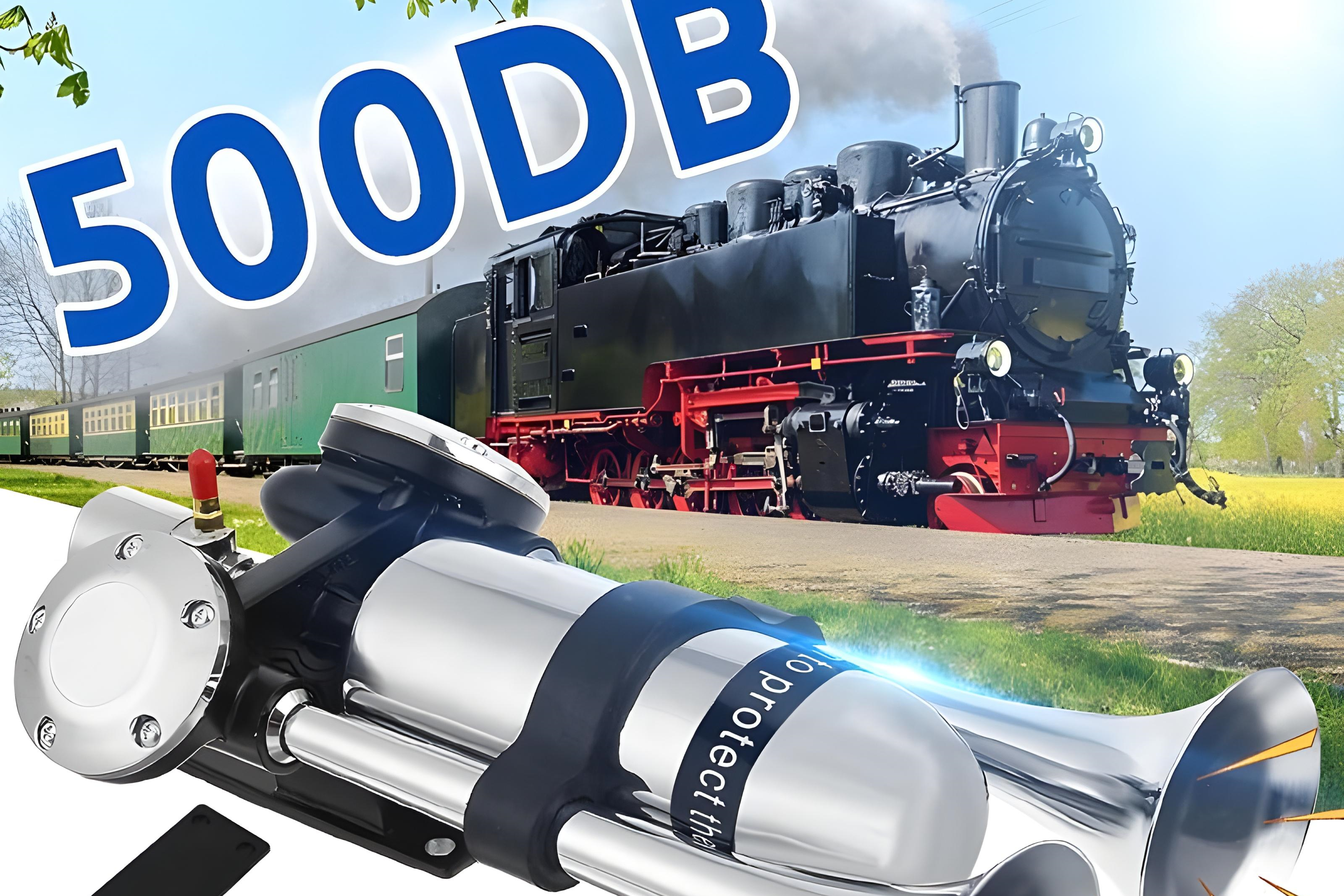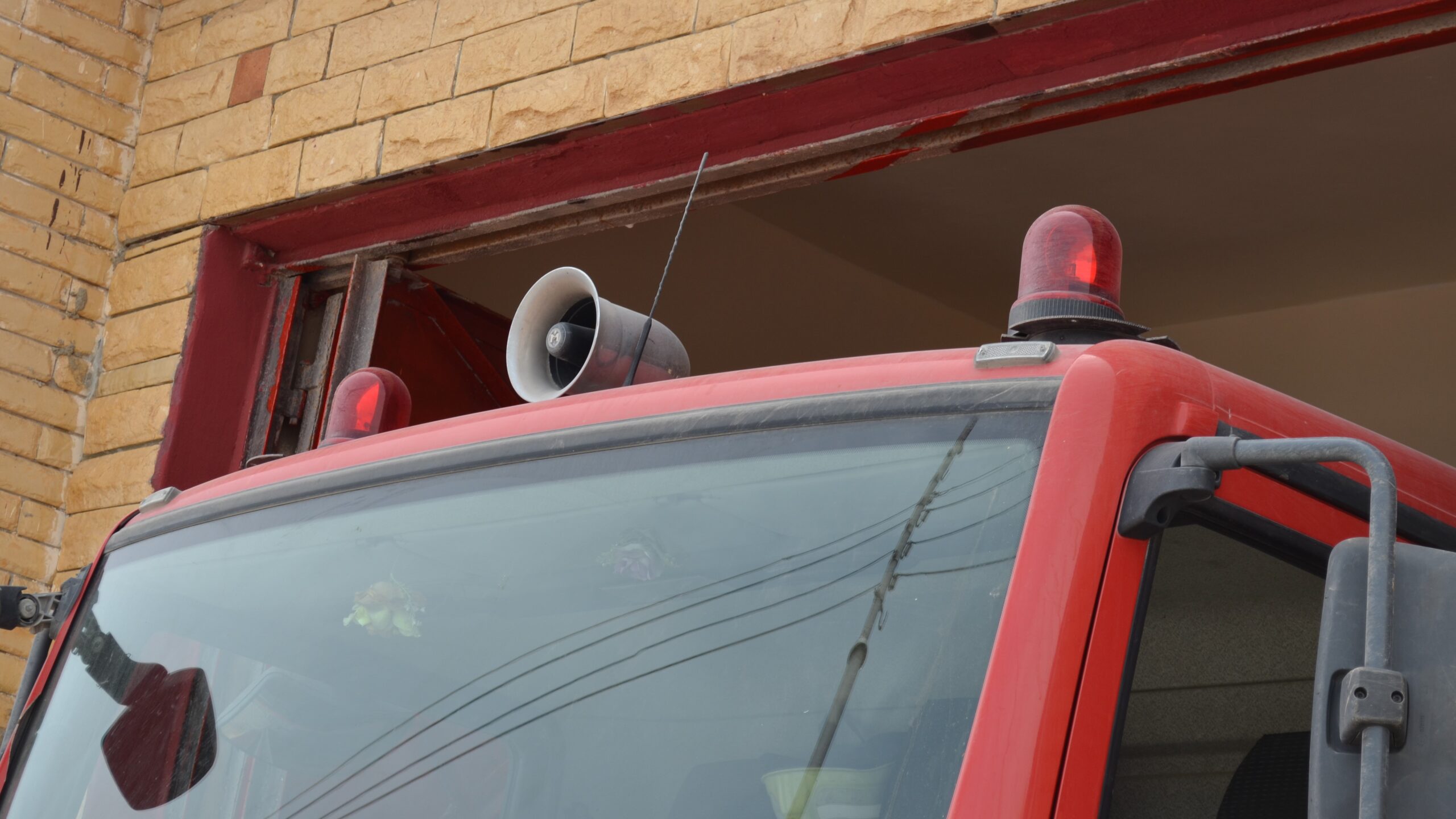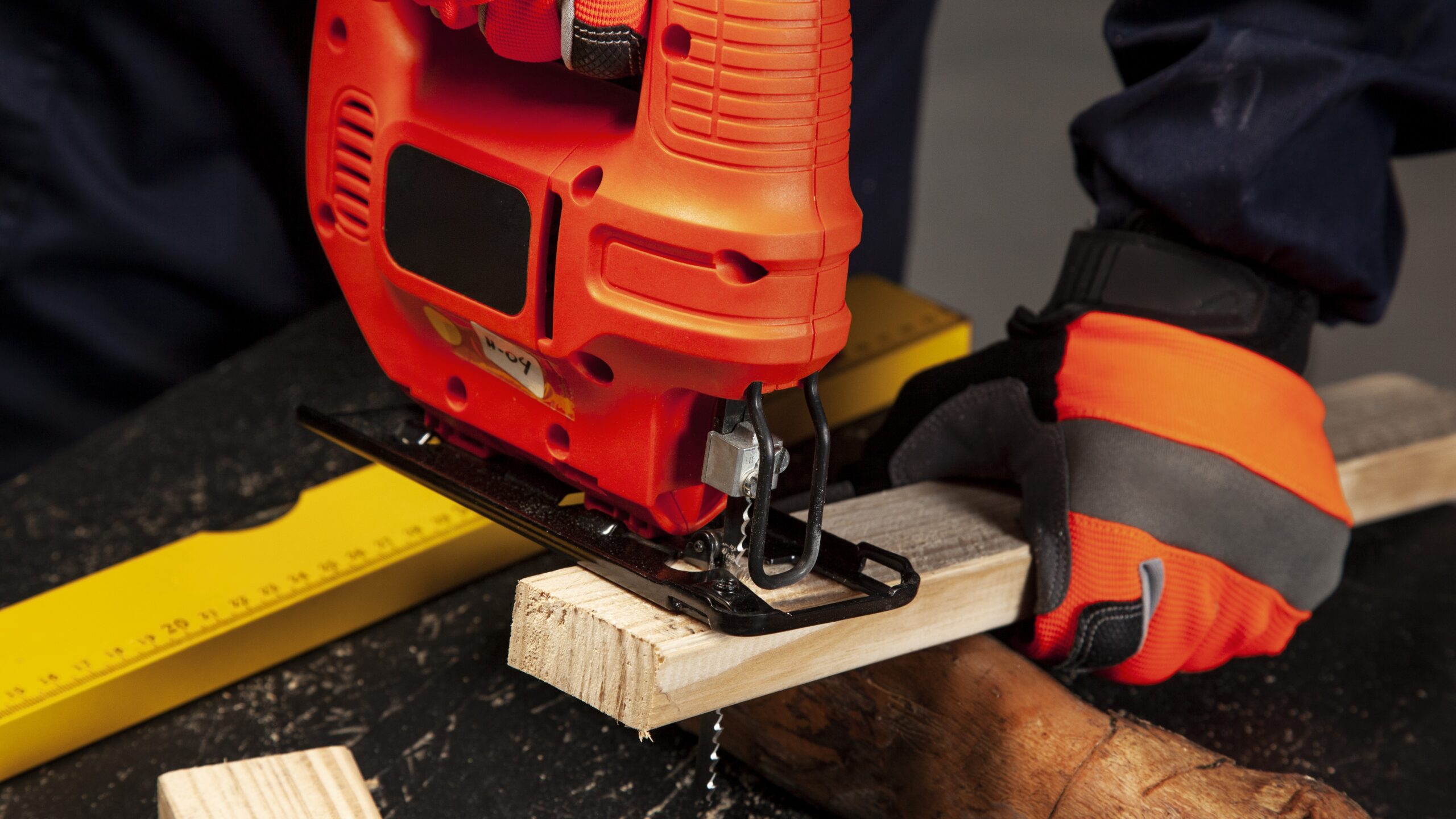If you’re someone who enjoys making a statement with your vehicle, adding a DeWalt Train Horn could be the perfect upgrade. These horns produce an incredibly loud, attention-grabbing sound that can make any car or truck stand out. In this guide, we’ll walk you through the steps to install a DeWalt Train Horn on your vehicle to ensure maximum sound. Let’s dive right in!
What Is a DeWalt Train Horn?
Before we dive into the installation process, let’s take a moment to understand what a DeWalt Train Horn is and why you might want one. Train horns are famous for their deep, powerful blasts that can be heard from miles away, often associated with the sound of a freight train barreling down the tracks. The DeWalt Train Horn captures that same iconic, ear-piercing sound, but it is specifically designed to be installed on vehicles, offering a similar level of power without requiring a massive air compressor.
These horns are engineered with loudness in mind, making them ideal for those who want their vehicle to stand out. The DeWalt Train Horn is perfect for drawing attention, whether it’s for safety purposes or simply for the fun of it. Unlike traditional vehicle horns, which tend to be relatively quiet and polite, the DeWalt Train Horn makes a bold statement with its booming sound.
What sets the DeWalt Train Horn apart is its durability. It’s built to withstand tough conditions, ensuring that it will continue to perform even in harsh environments. Whether you’re dealing with extreme weather or rugged terrain, this horn is designed to handle it all, making it a reliable choice for anyone looking to make a lasting impression.
Typically powered by an air compressor, the DeWalt Train Horn produces its signature sound through a carefully designed air system that maximizes pressure and volume. The horn is constructed from high-quality materials that ensure long-lasting performance and resistance to wear and tear, giving you peace of mind that your vehicle will always be equipped with a horn that can get noticed when it matters most.
Why Choose a DeWalt Train Horn for Your Vehicle?
There are several compelling reasons why a DeWalt Train Horn might be the perfect addition to your vehicle. Here’s a detailed list of benefits to help you understand why this horn could be the right choice for you:
- Maximum Sound: One of the primary reasons people choose a DeWalt Train Horn is its unmatched loudness. These horns are designed to be heard over long distances, cutting through the noise of traffic or any other distractions. Whether you want to make a statement, grab attention, or just enjoy a powerful blast, the DeWalt Train Horn provides the ultimate auditory impact. It’s an attention-grabber in every sense, ensuring that your vehicle will never go unnoticed.
- Durability: DeWalt is a brand renowned for its commitment to quality and durability, and their train horns are no exception. Made from high-quality materials, these horns are built to withstand harsh conditions, whether you’re driving in extreme weather, on rough terrain, or through everyday city traffic. The robust construction ensures that the horn will continue to perform at its best for years, offering long-lasting reliability.
- Improved Safety: A loud train horn isn’t just for show – it can be a valuable safety feature. In situations where your vehicle might be hard to see, such as in heavy traffic, fog, or on narrow roads, the DeWalt Train Horn can alert other drivers to your presence. This can help prevent accidents and ensure that you’re noticed when it’s crucial for your safety. Its power and loudness make it an effective tool for avoiding potential collisions or warning other vehicles of your presence.
- Easy Installation: Unlike some other vehicle modifications, the DeWalt Train Horn is relatively simple to install. With the right tools and a little bit of time, you can mount the horn and compressor system to your vehicle and be ready to go. The horn kit usually includes everything you need, from the compressor to the mounting brackets and wiring, making the installation process more straightforward than you might think.
- Versatility: Whether you drive a car, truck, or SUV, the DeWalt Train Horn can be fitted to almost any vehicle. This versatility makes it a popular choice for a wide range of vehicles. Whether you’re driving a large truck or a smaller compact car, you can still enjoy the booming sound of a train horn without worrying about fitment issues.
- Attention-Grabbing for Fun or Practical Use: The DeWalt Train Horn can serve both practical and fun purposes. It’s perfect for alerting other drivers in critical situations, but it’s also great for having some fun. Whether you’re at a car meet, a parade, or just driving around town, a train horn is sure to grab attention and add a unique touch to your vehicle. It can be a great conversation starter or just a way to have a little fun with your ride.
- Affordable Upgrade: For the level of performance and impact you get from a DeWalt Train Horn, it’s relatively affordable compared to other vehicle modifications. It provides a high return on investment in terms of sound and functionality without breaking the bank. If you’re looking for a way to make a dramatic change to your vehicle without spending too much, this horn could be the ideal choice.
- Increased Resale Value: A unique feature like a DeWalt Train Horn can also increase the resale value of your vehicle. Many car enthusiasts appreciate modifications that improve sound quality or add a bold, distinctive feature to a vehicle. If you’re planning on selling your car or truck in the future, the horn could be a selling point that attracts potential buyers.
- High-Quality Components: The DeWalt Train Horn is powered by a high-performance air compressor that ensures the horn produces a consistent, loud sound every time. The compressor is built to last and works efficiently, providing the necessary pressure to get the maximum output from the horn. Additionally, the horn itself is designed to withstand the elements, ensuring that it continues to function optimally regardless of weather conditions.
What You’ll Need to Install the DeWalt Train Horn
| Item | Description | Purpose | Notes |
| DeWalt Train Horn Kit | This includes the horn itself, the air compressor, and the necessary mounting hardware. | Provides the core components for the horn setup. | Ensure the kit is complete with all parts included. |
| Wrench Set | A set of wrenches for tightening bolts and nuts. | Used to secure the horn and compressor firmly. | Make sure to have both adjustable and fixed wrenches. |
| Drill | A power drill for creating holes for the mounting brackets. | Necessary for installation of mounting brackets. | A cordless drill with various drill bit sizes is ideal. |
| Airline Tubing | Tubing used to connect the air compressor to the horn. | For connecting the air supply to the horn. | Check the tubing’s diameter for proper fitment. |
| Screws and Bolts | Screws and bolts to secure the compressor and horn in place. | To mount the horn and compressor securely. | Make sure you have enough of different sizes. |
| Electrical Tape | Used to secure electrical connections and prevent them from loosening. | For insulating wires and connections. | Use high-quality tape to ensure secure connections. |
| Power Source | Access to your vehicle’s electrical system (typically the battery or fuse box). | Provides the necessary power for the compressor. | Ensure your power source is reliable and can handle load. |
Step-by-Step Guide to Installing the DeWalt Train Horn
The first step is to choose the perfect location for the horn. A common and effective location is the front bumper, as it is the most visible and offers the best sound projection. Alternatively, you can opt to mount the horn under the vehicle for a more discrete setup, ensuring it remains exposed to the open air for optimal sound. Whichever location you choose, make sure there are no obstructions that could block or muffle the sound.
Once you’ve selected the location, it’s time to mount the horn. Start by positioning the horn where you want to mount it, then use the included brackets to secure it in place. If necessary, drill holes into the vehicle’s frame or bumper to attach the mounting bracket. Once the bracket is secure, use screws and bolts to fasten the horn tightly. Ensure it is firmly attached to prevent any movement during use, as this could affect its performance.
Next, you’ll need to mount the air compressor. The compressor is responsible for providing the air pressure needed to produce the horn’s loud sound. Choose a suitable location for the compressor, ideally one that is secure and close enough to the horn so that the airline tubing can easily connect the two components. After choosing the location, use the included hardware to mount the compressor. Make sure it is accessible for future maintenance and repairs.
Now it’s time to connect the airline tubing, which transfers air from the compressor to the horn. Start by measuring and cutting the tubing to the correct length, ensuring that there’s enough slack for flexibility but not too much that it could sag or get caught. Attach one end of the tubing to the horn’s air inlet and secure the connection tightly. Then, attach the other end of the tubing to the compressor’s output port, making sure the connection is tight to prevent air leaks. With everything connected, move on to wiring the electrical system to power the horn and compressor.
Maintaining Your DeWalt Train Horn for Longevity
Once your DeWalt Train Horn is installed, it’s essential to maintain it for optimal performance. Here are a few maintenance tips:
- Regularly check the air compressor to ensure it is functioning properly and that the air pressure levels are consistent.
- Clean the horn to prevent dirt and debris buildup, which can affect the sound quality and performance.
- Inspect the airline tubing for any signs of cracks or leaks. Replace any damaged sections to prevent air loss and ensure the horn produces maximum sound.
- Periodically check the wiring and electrical connections, ensuring they are secure and free from corrosion that could cause connectivity issues or malfunctions.
DeWalt Train Horn Maintenance: Essential Tips for Long-Lasting Performance
| Maintenance Task | Tools Needed | Frequency | Potential Issues Prevented | Additional Notes |
| Check Air Compressor | Pressure gauge, wrench | Every 3 months | Low air pressure, compressor failure | Ensure the compressor is securely mounted and not exposed to moisture. |
| Clean the Horn | Mild detergent, cloth | Monthly | Reduced sound clarity, performance degradation | Avoid using abrasive cleaners, which could damage the horn. |
| Inspect Airline Tubing | Visual inspection, wrench | Every 6 months | Air leaks, cracks, tubing wear | Replace any cracked or worn tubing immediately to avoid leaks. |
| Inspect Wiring Connections | Multimeter, wrench | Every 6 months | Loose connections, corrosion, electrical shorts | Make sure the wiring is tight and check for any signs of corrosion. |
| Lubricate the Compressor | Lubricant | Every 12 months | Increased wear, compressor inefficiency | Follow the manufacturer’s recommendations for compatible lubricants. |
Why Regular Maintenance is Crucial for Your DeWalt Train Horn
When you invest in a DeWalt Train Horn, you’re not just buying a loud, powerful sound for your vehicle—you’re adding a high-quality piece of equipment that requires proper care to function at its best. Regular maintenance is essential for preserving the longevity of the horn and ensuring it produces maximum sound output when you need it. Neglecting maintenance can lead to poor performance, air leaks, and potential breakdowns, which could leave you with a weak or non-functioning horn at the wrong time.
The air compressor, for example, is the heart of your DeWalt Train Horn system, providing the pressure needed to create those thunderous blasts. Without regular checks on the air pressure and the condition of the compressor, you might experience a decrease in performance or even complete failure. It’s important to check the air compressor every few months, looking for signs of wear, air loss, or unusual sounds that may indicate an issue. A functioning compressor ensures that the horn maintains its powerful sound.
Another important aspect of maintenance is keeping the horn itself clean. Over time, dirt, dust, and debris can accumulate on the surface of the horn, blocking airflow and affecting the clarity and strength of the sound. Regular cleaning, ideally with mild soap and water, can help prevent this from happening. Cleaning should be done monthly or whenever you notice a buildup of dirt. Remember to avoid harsh chemicals or abrasive materials, which can damage the horn’s surface and reduce its effectiveness.
Lastly, the tubing and wiring are vital to the overall performance of the system. Cracked or damaged airline tubing can cause air leaks, diminishing the power of the horn and reducing the sound quality. Similarly, loose or corroded electrical connections can cause the system to malfunction, making it crucial to inspect these components periodically. By ensuring all connections are tight and secure, and replacing any damaged tubing or wires, you can prevent unnecessary issues and maintain consistent horn performance. Regular maintenance on these key areas is the best way to ensure your DeWalt Train Horn continues to perform at its best for years to come.




